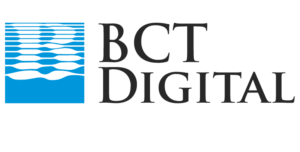

Effective model risk management framework to manage, measure and mitigate model risks
- Federal Reserve’s Regulations Supervision and Regulation Letters 14-3 for Bank Holding Companies (BHCs) and their subsidiaries.
- Financial Accounting Standards Board (FASB) accounting standard (ACU 2016-13) ‘Financial Instruments.
- Comprehensive Capital Analysis and Review (CCAR) United States regulatory framework.
- The Fundamental Review of the Trading Book (FRTB).
- Central Bank of United Arab Emirates (CBUAE) (IFRS 9).
- Basel III International banking regulations.
- SR 11-7 Supervisory Guidance on Model Risk Management.
- Office of the Comptroller of the Currency ((OCC) 2011-12) guidelines on model development and validation process, along with the associated governance, policies, and controls.
- Targeted Review of Internal Models (TRIM).
- International Financial Reporting Standard 9 (IFRS 9).
Key Features
Model configuration
Allows to configure, customize, manage changes, and track easily without much intervention from bank IT staff.
Data operations
From Data Ingestion, Transformation, Loading and Data Quality.
Model estimations
Different credit risk model parameters such as PD, LGD, EAD and ECL.
Model validation
Includes Quantitative Validation (Discriminatory Power Tests, Calibration, Benchmarking and Stability) and Qualitative Validation.
Model management
Covering model inventory, model issues and management of model under development.
Model workflow / Case management
Functionality for transparency and ease of audit.
Stress testing and scenario analysis
For various parameter level and macroeconomics scenarios.
Reporting
Functionality to view and download reports in predefined formats.
Benefits

Single source of truth

Bolster internal expertise

Structured case management

Minimized cost and effort
Brochure
rt360 Model Risk Management
Manage the lifecycle of models used in your organization to mitigate risks arising from them and to ensure compliance.
Download Nowrt360 Early Warning System
Identify credit risks proactively leveraging end-to-end predictive analytics.
rt360 RAROC Calculator
As you focus on credit growth for your bank, capital allocation and pricing is critical to maximizing profitability and driving sustainable growth
rt360 Model Risk Management
Global regulators in recent times have paid an increasing attention to managing risks arising from extensive use of models in decision making.
rt360 Expected Credit Loss
With the introduction of the global International Financial Reporting Standards-9 (IFRS 9) and its equivalent Indian Accounting Standards (IND AS) 109, financial institutions are adopting scientific methods for computing credit losses.
rt360 Asset Liability Management
Growing regulatory mandates by the Bank of International Settlements’ (BIS) demand automated systems for robust asset-liability management.

Let's Connect
















